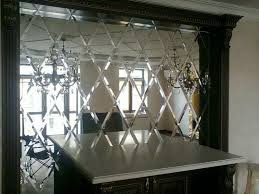Processing or Faceting?
Processing the
edge of the glass in the manufacture of products is necessary to reduce the
likelihood of chips and cracks, relieve residual stress, make products safe and
attractive in appearance. This important technological procedure is carried out
on specialized equipment by highly qualified specialists.
 |
| Facet |
Glass grinding
is performed after cutting the glass into the necessary blanks. Without
grinding, the edge of the glass has sharp edges that can be harmful to human
health, in other words, one can well cut oneself with such an unprocessed glass
edge. Using special equipment, glass grinding removes bumps, sharp edges,
leaving the surface opaque, rough and most importantly safe.
Edge polishing
is the final production process, treatment the glass edge to a transparent
state and perfectly smooth surface. The main objective of this type of
processing is to achieve a good aesthetic perception of the appearance of the
finished product. The transparent end of the product is made in the form of a
trapezoid.
 |
| Facet on Glass |
Facet processing
is the processing of the edge of the glass by cutting at an angle along the
front side and then polishing this section. Facet processing creates a play of
light on the edges of the mirror and glass - it looks very impressive, elegant,
and adorns even the most simple and small product.
A
panel of mirror tiles processed with facet gives the room a special chic. It is
a very popular type of interior decor now.